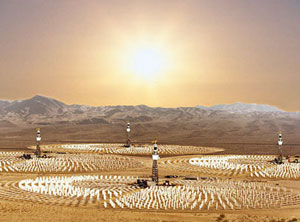30 countries pledged donations totaling $4.43 billion to the Global Environment Facility (GEF), which will be used over the next four years to help developing countries preserve the environment.
In more than 140 countries, projects will tackle a broad range of threats: climate change, deforestation, land degradation, extinction of species, toxic chemicals and waste, and threats to oceans and freshwater resources.
The last round of GEF funding in 2010, raised $4.25 billion. This time, funds will also be used to support the international treaty signed last year to control mercury emissions, the Minamata Convention.
Also new is an "Integrated Approaches Pilot," which aims at addressing environmental degradation by focusing on their underlying drivers, such as food security in Africa, sustainable city development, and removing illegally logged wood from global supply chains. These issues can only be addressed if broad coalitions of stakeholders across countries and sectors come together around a common action agenda.
"We have better scientific evidence that human activity can lead to tipping points with a risk of irreversible and abrupt environmental change. By focusing on the drivers of environmental change and by seeking multiple benefits, the GEF is taking the right approach to turn around the worrying trends in the global environment," says Doris Leuthard, who heads the Federal Department of the Environment, Transport, Energy and Communications in Switzerland.
One of the projects GEF supports is the world’s biggest concentrating solar project, under construction in Morocco. It also finances Costa Rica’s Trust for the Sustainable Biodiversity Fund, which pays landowners to protect valuable conservation areas. Other exciting initiatives are Africa’s Great Green Wall and the Rwandan government’s pledge to restore the entire country’s soil, water, land and forest resources by 2035.
Morocco’s Ain Beni Mathar concentrating solar plant:

While $4.4 billion is a lot of money, compare that to the $500 billion a year the world spends subsidizing fossil fuels. If we really want to restore the Earth’s natural support systems, it would take $110 billion a year, according to Lester Brown’s book, World on the Edge, which would include preserving 17% of all land.
Capitalizing the Green Climate Fund would provide the $100 billion a year that’s needed and is essential to reaching an international climate treaty in 2015. So far that fund is just about empty.
Learn more about GEF:

